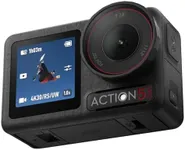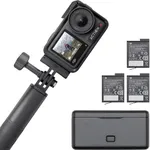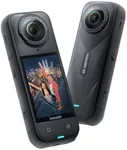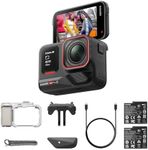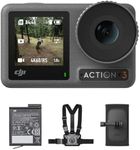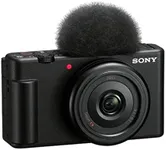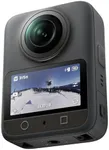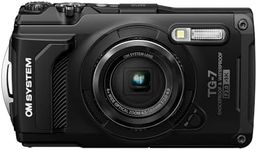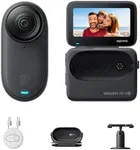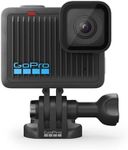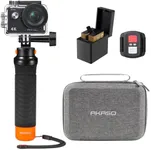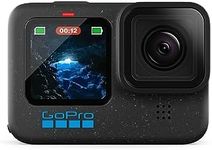Buying Guide for the Best Action Cameras
Choosing the right action camera can make a big difference in capturing your adventures, whether you're biking, surfing, hiking, or just recording everyday moments. The best approach is to think about how and where you'll use the camera most often. Consider what features matter most for your activities, such as video quality, durability, and ease of use. By understanding the key specifications, you can find a camera that fits your needs and helps you get the best footage possible.Video ResolutionVideo resolution refers to the number of pixels the camera uses to record video, which affects how clear and detailed your footage will look. Common resolutions include 1080p (Full HD), 1440p, 2.7K, and 4K. Higher resolutions like 4K provide sharper images and are great if you want to see fine details or plan to watch your videos on large screens. However, higher resolution files take up more storage space and may require more powerful devices to edit. If you mostly share videos online or watch them on your phone, 1080p or 1440p might be enough. Choose a resolution based on how you plan to use and view your videos.
Frame RateFrame rate is the number of individual images (frames) the camera captures per second, usually shown as fps (frames per second). Common frame rates are 30fps, 60fps, and 120fps. Higher frame rates make motion look smoother and allow for slow-motion playback, which is great for action shots. If you want to capture fast-moving sports or create slow-motion effects, look for cameras that can shoot at 60fps or higher. For regular use, 30fps is usually enough. Think about whether you want smooth, cinematic footage or just standard video when choosing the right frame rate.
Image StabilizationImage stabilization helps reduce shakiness in your videos, making them look smoother, especially when you're moving or holding the camera by hand. Some cameras have basic stabilization, while others offer advanced electronic or optical stabilization. If you plan to use the camera for activities with lots of movement, like biking or running, strong stabilization is important. For more stationary activities, basic stabilization may be enough. Consider how much movement your videos will have to decide how much stabilization you need.
Waterproofing and DurabilityWaterproofing and durability refer to how well the camera can handle water, dust, and rough treatment. Some cameras are waterproof without any extra case, while others need a special housing. If you plan to use the camera for water sports or in harsh environments, look for models that are waterproof to the depth you need and are built to withstand drops and bumps. If you'll mostly use the camera in safe, dry places, basic protection may be enough. Match the camera's toughness to your activities.
Battery LifeBattery life tells you how long the camera can record before needing a recharge. Action cameras usually have smaller batteries, so recording time can range from less than an hour to a couple of hours per charge. If you plan to record long sessions or won't have easy access to charging, look for cameras with longer battery life or the option to swap batteries. For short clips or occasional use, battery life may be less important. Think about how long you'll need to record at a time to choose the right battery performance.
Mounting OptionsMounting options refer to the ways you can attach the camera to helmets, bikes, tripods, or other gear. Some cameras come with a wide range of mounts, while others have fewer options. If you want to use the camera in many different ways, make sure it supports the mounts you need. For example, if you want to attach it to a surfboard or a drone, check for compatible accessories. Consider how and where you want to use the camera to decide which mounting options are important for you.
Field of View (FOV)Field of view is how wide an area the camera can capture in a single shot. Action cameras often have wide or ultra-wide lenses to capture more of the scene, which is great for action sports and immersive footage. Some cameras let you adjust the FOV to be narrower or wider. If you want to capture everything around you, a wider FOV is better. If you prefer less distortion and a more focused shot, a narrower FOV may be best. Think about the look you want for your videos when choosing the field of view.
